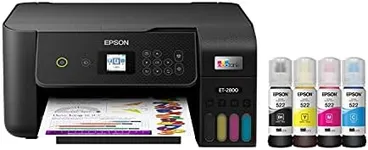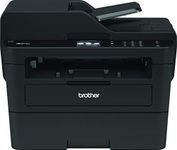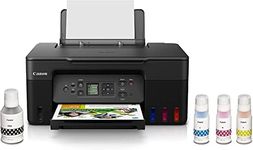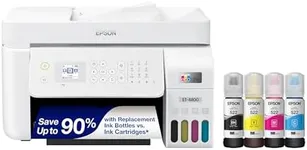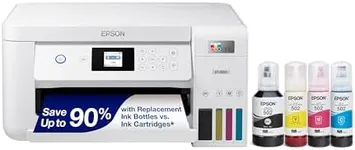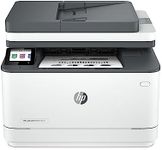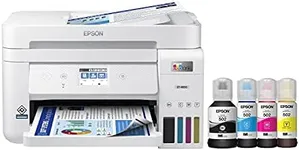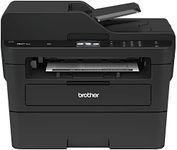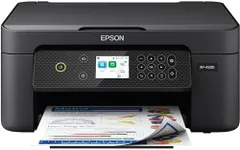Buying Guide for the Best Printer Scanners
Choosing a printer-scanner can feel overwhelming because there are so many options and features to consider. The best approach is to think about how you plan to use the device: will you print mostly documents or photos, do you need to scan frequently, and how much space do you have? Understanding your needs will help you focus on the features that matter most to you, making it easier to find a model that fits your lifestyle and work habits.Print TechnologyPrint technology refers to the method the printer uses to produce images and text, with the most common types being inkjet and laser. Inkjet printers are versatile and can handle both documents and photos, making them great for home use or creative projects. Laser printers are typically faster and more efficient for high-volume text printing, which is ideal for offices or anyone who prints a lot of documents. If you mostly print photos or need color, inkjet is usually better, while laser is best for lots of black-and-white documents.
Print and Scan ResolutionResolution is measured in dots per inch (DPI) and tells you how sharp and detailed your prints and scans will be. Higher DPI means better quality, especially for photos and images, but for basic text documents, a lower DPI is usually sufficient. If you plan to scan or print photos, look for higher resolution; for everyday documents, standard resolution will do the job.
Print SpeedPrint speed is usually measured in pages per minute (PPM) and indicates how quickly the printer can produce documents. Faster speeds are helpful if you print large documents or need to print often, while slower speeds are fine for occasional use. If you print a lot, look for higher PPM; if you only print now and then, speed may not be as important.
Connectivity OptionsConnectivity refers to how you connect the printer-scanner to your devices. Common options include USB, Wi-Fi, Bluetooth, and sometimes Ethernet. Wireless options like Wi-Fi and Bluetooth are convenient for printing from multiple devices or from your phone, while USB is reliable for a direct connection. Choose the connectivity that matches how you plan to use the printer—wireless for flexibility, wired for simplicity.
Automatic Document Feeder (ADF)An Automatic Document Feeder lets you scan or copy multiple pages at once without having to place each page on the scanner glass manually. This is especially useful if you often scan or copy multi-page documents. If you only scan occasionally or just single pages, you may not need this feature, but for frequent or bulk scanning, an ADF can save a lot of time.
Duplex Printing and ScanningDuplex means the printer or scanner can handle both sides of a page automatically. This is great for saving paper and time, especially if you print or scan double-sided documents regularly. If you rarely need double-sided pages, this feature may not be necessary, but it's a big convenience for frequent users.
Paper Handling and Size SupportPaper handling covers the types and sizes of paper the printer can use, as well as the capacity of its input and output trays. Some printers handle only standard letter or A4 sizes, while others can print on envelopes, labels, or larger paper. If you need to print on special media or in large quantities, look for a model with flexible paper handling and larger trays.
Operating System CompatibilityThis refers to whether the printer-scanner works with your computer or mobile device's operating system, such as Windows, macOS, or mobile platforms. Make sure the device you choose is compatible with your main devices to avoid setup headaches. Most modern printers support a wide range, but it's always good to check.
Size and DesignThe physical size and design of the printer-scanner can affect where you can place it and how easy it is to use. Compact models are great for small spaces, while larger ones may offer more features or bigger paper trays. Think about where you'll put the device and how much space you have before choosing.
